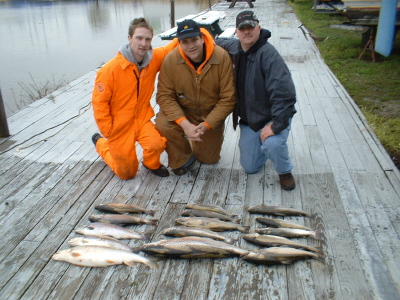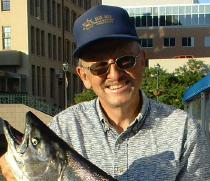Busting Spring Brown Trout Milwaukee
Busting Spring Brown Trout Milwaukee
By Lake Michigan fishing charter Capt. Jim Hirt
Spring is definitely the season for coolers full of Brown Trout. Let me explain how to be more productive by following some basic rules and using basic tools. Activity and habits of fish are dictated by many variables. A rather basic approach will put you on fish and keep you there. I will cover how to find the most productive zones by species in the next several articles. Now let’s look at Brown Trout as it applies to Lake Michigan and other big water ecosystems.
Questions
Should you have a question please e-mail me from my Blue Max website contact us page. Read all my articles and see video fish reports at http://www.jimhirt.com
Zones By Species
Lake Michigan Milwaukee is an outstanding fishery with many options for anglers. The most popular targets of anglers here are Chinook salmon, Coho Salmon, Rainbow Trout, Brown Trout and Lake Trout. Allow me to offer environmental preferences for each of these. Breaking each fish down by their preferences is the best way to find steady consistent action on any fish.
Environmental Preferences
The top of the most important list and what I look for is food and temperature. When you are in a zone with the correct temperature and good forage you will increase your chances. Other important factors are cover, habitat, maturity of fish, light intensity, water depth, weather, current flow, current intensity, oxygen level and fishing pressure. Your ability to measure, monitor and locate the ideal set of fishing preferences for your target is key.
Brown Trout Zone By Temperature
Big browns are common in the estuary created in the Milwaukee area by three rivers. Brown Trout are a warm water species, so look for them in temperatures above 55 degrees. They will tolerate colder water and temperatures above 65 however my biggest browns over twenty pounds have come at near 55 degrees. Keep your baits in 55-degree temperature and you will increase your odds on big fish. When I am catching small fish, I know the water is too warm for a trophy. It is time to adjust the tackle to colder water. A temperature gauge is a tool a trout fisherman cannot be without.
Location And Forage
The principal types of forage for trophy fish in Lake Michigan are the Alewife and Goby. Look for pods of forage for consistent action. I have caught browns in water as shallow as 5 feet and out to 100 feet. Most consistent action however is in shallow water or the top 25 feet where warm water has accumulated. Early spring in the months of March April And May we find are consistently the best for browns. Over the years 90% of this species are caught when the water is below their preferred temperature. The reason for outstanding spring fishing for this fish is the cold water of Lake Michigan concentrates the fish. The Lake temp is in the mid to high thirties and this causes the fish to stay near the warmer water of the river mouths and harbor gaps. Later in the season the browns disperse along the shoreline. Finding a temperature break is the key to finding fish. A break is defined as a major or minor change in water temperature. At times a small change of a degree or two will hold fish but I have found the greater the change the better the concentration of fish.
Presentations For Lunker Browns
First light of the day is the best time to catch this quarry. They seem to be more sensitive to light than other types of fish. Light up a Vulcan or Reaper Magnum Glow spoon sold by Badger Tackle before first light for fish in the box ahead of the rest of the pack of anglers. A stealthy approach is necessary for the biggest fish. In definition stealth is a presentation that avoids being notice. Several are used for trolling.
I would skip the downriggers as a presentation for browns. I have found this to be the least productive of presentations I have tried. The most successful for me is Cortland leadcore. A weighted line with a Seaguar fluorocarbon leader is attached to a Church Walleye Planer board. The planer board is run well off to the side of the boat out of the travel path. Leadcore is graduated to allow five feet of depth for every color. Five colors will run lures approximately 25 feet down 10 colors fifty feet and so on. This allows you to fish any depth you want.
Hot Lures Define The Day
Let’s wrap this up with my favorite lures. Magnum spoons are my first choice. Use Glow in dark for before first light and in heavy overcast. When fishing in very bright conditions or with the presence of small baitfish go to regular or small lures. My magnum spoons are about five inches long, regular four inches and small three inches. The two most productive spoons for me during the 2012 season was the Vulcan magnum and Reaper Magnum both sold by http://www.badgertackle.com For a slow 2.0 M.P.H. or slower presentation I use the Reaper. Above 2.0 speeds the Vulcan is best, it mixes well with most big plugs and flasher flies.
I will continue with Zones for Coho Salmon in the next article. Good Luck! Jim charters out of Milwaukee, WI. with Blue Max Charters. He can be reached at 414-828-1094 or visit his web site at http://www.bluemaxcharters.com Copyright© 2013, James J. Hirt, All Rights Reserved






